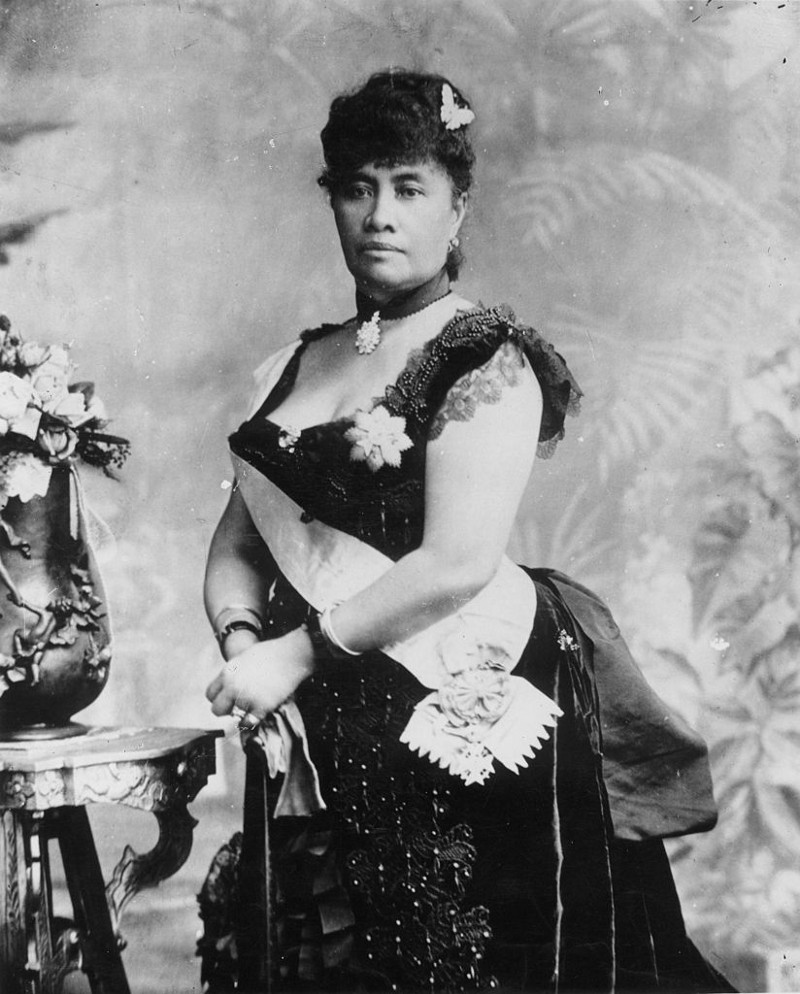Jan 17, 2018
A brief overview of
the 1893 overthrow of
the Hawaiʻi’s Queen
Liliʻuokalani

Queen Liliʻuokalani
Today’s the 125th anniversary of the overthrow of Hawaiʻi’s Queen Liliʻuoukalani. Like the vast majority of people, I was never taught in school how and why exactly Hawaiʻi became a state of the U.S., so I want to do a relatively quick overview on this chapter of Hawaiian history.
One seldom known fact is that at the time of the 1893 overthrow, the Hawaiian Kingdom was an internationally recognized sovereign nation. The aliʻi (chiefs, rulers) had been very strategic, building good relations with some of the biggest international players at the time. However, the U.S. saw the potential for Hawaiʻi to help expand their military and agricultural sectors, and was therefore hell-bent on seizing control over Hawaiʻi and undoing the Hawaiian Kingdom.
In 1887 U.S. powers forced King Kalākua to sign the Bayonet Constitution, which was a tool used to begin stripping the monarchy of its power and transfer it to U.S. forces. Later in 1887 was the Reciprocity Treaty, which was a free-trade agreement between the U.S. and Hawaiʻi. Note: historically, “free-trade” with the U.S. is synonymous with unhindered exploitation by the U.S.
One often overlooked detail of the Reciprocity Treaty of 1887 is that it set an expiration date of 1894 for the U.S.’s exclusive use of Pearl Harbor. Keen to maintain and expand its military presence in and agricultural exploitation of Hawaiʻi, the U.S. sought to overthrow Queen Liliʻuokalani. On January 16, 1893, the USS Boston landed soldiers and stationed them around ʻIolani Palace and Aliʻiōlani Hale. They left Queen Liliʻuokalani with no option.
The very next day, “a committee of thirteen haole [foreigners, especially white people] read a proclamation claiming that monarchy in the Hawaiian Islands had been abrogated and that they were the provisional government of the islands” (Beamer, 2014, p193).
President Grover Cleveland recognized the illegality of the overthrow, withdrawing the consideration of annexing Hawaiʻi and calling for the reinstallation of Queen Liliʻuokalani. However, he did very little to actually make this happen. By the next U.S. presidency, the power of the ‘provisional government’ was largely secured, in 1897 even naming itself to the “Republic of Hawaiʻi”. I can’t stress enough that even at the time of the overthrow this was all internationally regarded as illegal activity.
One last facet of the overthrow I want to touch on is the role of Sanford Dole, a la Dole Food Company. Dole was the President of the Republic of Hawaiʻi (the illegitimate, illegal government), then later the governor after Hawaiʻi was annexed as a territory. Dole was adamant about exploiting Hawaiʻi:
“The importance of immigration of American farmers as settlers of agricultural lands here is so great to the political and social future of these islands, that everything should be done to encourage it and make it successful.”
Dole also put in work repealing the land laws of the Hawaiian Kingdom via the Land Act of 1895, and was an incredibly strong proponent of “the cultivation of a white Anglo-Saxon population” in Hawaiʻi. The Dole company was built on imperialism and white supremacy.
The history following the overthrow is about as you’d expect — one of constant struggle to heal from & resist against a false government and exploitation. If you want to learn more, I highly recommend No Mākou Ka Mana by Dr. Kamanamaikalani Beamer (which is the book I quoted throughout this post).
+++++++++++
Jonathan Fisk—Boricua/Taíno via LBC | PhD student in NREM, UH Manoa | B.S. & M.S. in Earth Systems, Stanford ’17 | financially support at https://cash.me/$Fisky
